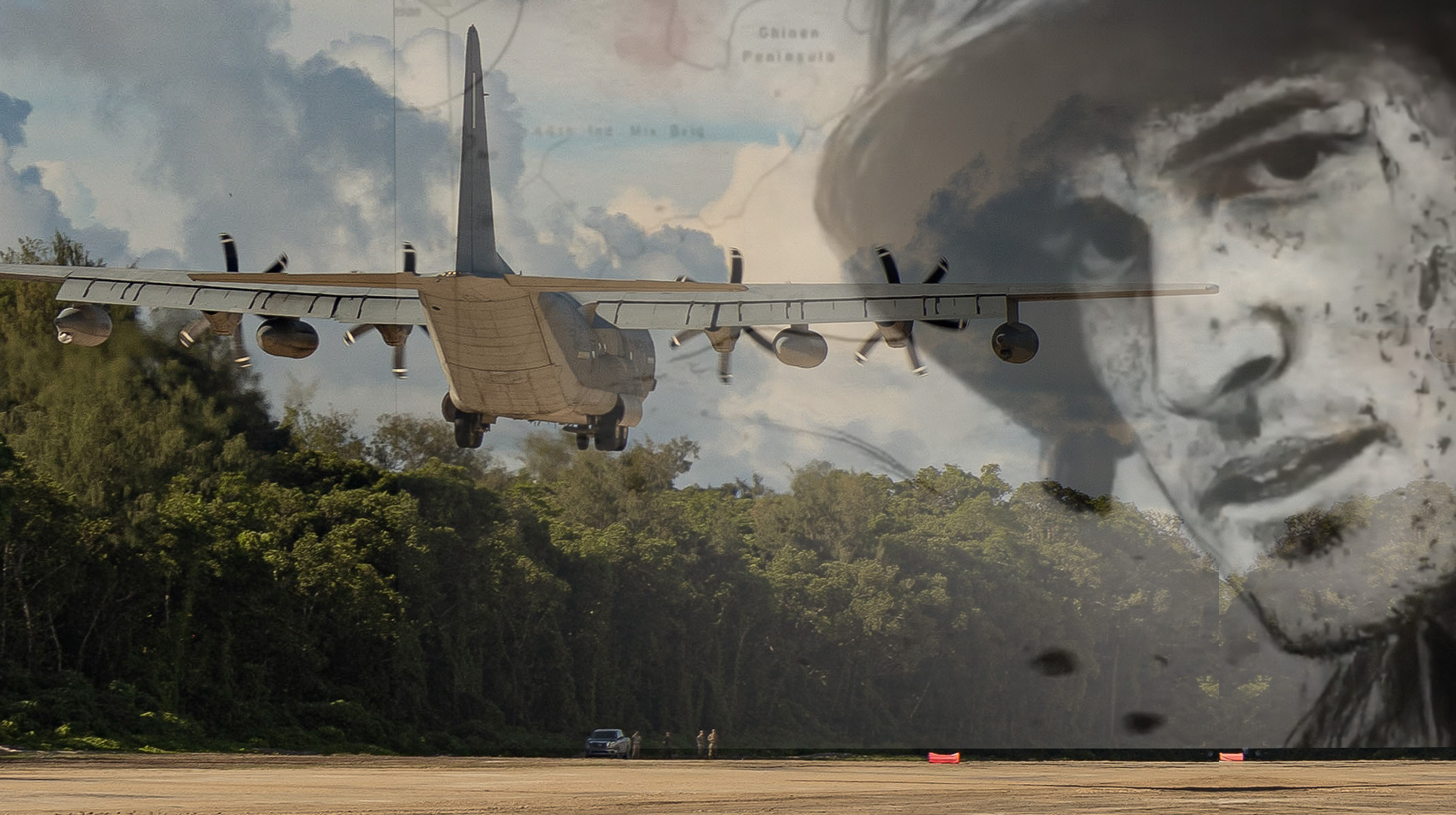

In 1944, the tiny island of Peleliu was the site of the some of the fiercest fighting of World War II, as Marines and Army soldiers fought to seize an airfield carved into its coral rocks. Saturday, that legacy was revisisted as Marines began flying again from Peleliu, this time with an eye towards its value in the modern Pacific theater.
A Marine Corps KC-130J Super Hercules tanker assigned to 1st Marine Air Wing touched down on Peleliu June 22. It was a major milestone for the U.S. Marine Corps’ ongoing efforts to restore and update military installation in the Pacific, many of which have World War II roots. The airstrip was officially recertified earlier this month.
The fight for Peleliu was one of the bloodiest in U.S. history as almost 50,000 Marines and Army soldiers pried the tiny island away from 10,000 Japanese soldiers. Nearly one of every three Americans that landed at Peleliu was killed or injured, the highest rate of any amphibious landing of the war, according to the Marines.
“Today is a historic moment as we land a Marine Corps aircraft on the ‘Sledge’ runway,” Maj. Christopher Romero, commanding officer of Marine Corps Engineer Detachment Palau (MCED-P). “This remarkable achievement demonstrates the strategic importance of our mission and our dedication to regional stability and security.”
The name ‘Sledge’ honors Eugene Sledge, a Marine who fought in the Battle of Peleliu and wrote “With the Old Breed: At Peleliu and Okinawa,” one of the books that was adapted for the HBO miniseries “The Pacific.” For the episode on Peleliu, the show focuses on Sledge’s experience as a mortarman during the landings and two months of fighting that followed.
According to the Department of Defense, the newly recertified airstrip, as well as other military improvements on the island, are “critical to enhancing U.S. military strategic capabilities in the Indo-Pacific region.” Peleliu is one of several locations in the Pacific where the U.S military has been upgrading or expanding its presence. That includes building up the military presence on Guam, putting newer aircraft in Japan and refurbishing sites that date back to the early 20th century. At Peleliu, more work is needed before the project is complete, but the recertification of the airstrip is a major milestone in restoring the site.
Subscribe to Task & Purpose Today. Get the latest military news and culture in your inbox daily.
The decades-old airfield had been essentially reclaimed by nature. Crews had to clear away large amounts of vegetation — and sweep the area for any unexploded ordnance from the war, an ongoing problem in the Pacific — before work on the airstrip proper could be done. The work also included supplemental projects, such as road improvements on the island.
The island, part of the nation of Palau, is notoriously small. A coral reef island, it is barely more than 5 square miles in size. Despite that, its airstrip was deemed a key step in the American island hopping campaign of World War II, pushing closer to the Japanese home islands (some, historians, though, question the value of the small island, and the high price paid for it, noting that the airfield never became a key outpost for airpower). The battle, which began Sept. 15, 1944, ran three months, ending with an American victory on Nov. 27. III Amphibious Corps, made up of Marines from the 1st Marine Division and soldiers from the 81st Infantry Division suffered at least 1,989 dead and more than 8,500 wounded. As part of the wider work on Peleliu today, the Marine Corps is expanding the Peleliu Civic Center Museum and adding pieces left over from the battle.
The latest on Task & Purpose
- Uniform inspections and stricter shaving rules coming in renewed Air Force focus on ‘standards’
- One of the Army’s top Nuclear teams trained with Rangers and Green Berets
- The 4th Infantry Division’s huge obstacle course looked like the zombie apocalypse
- Army barber’s 57 year legacy with the Airborne leads to haircutting hall of fame
- Master Chief William Goines, first Black Navy SEAL, passes away at 88
